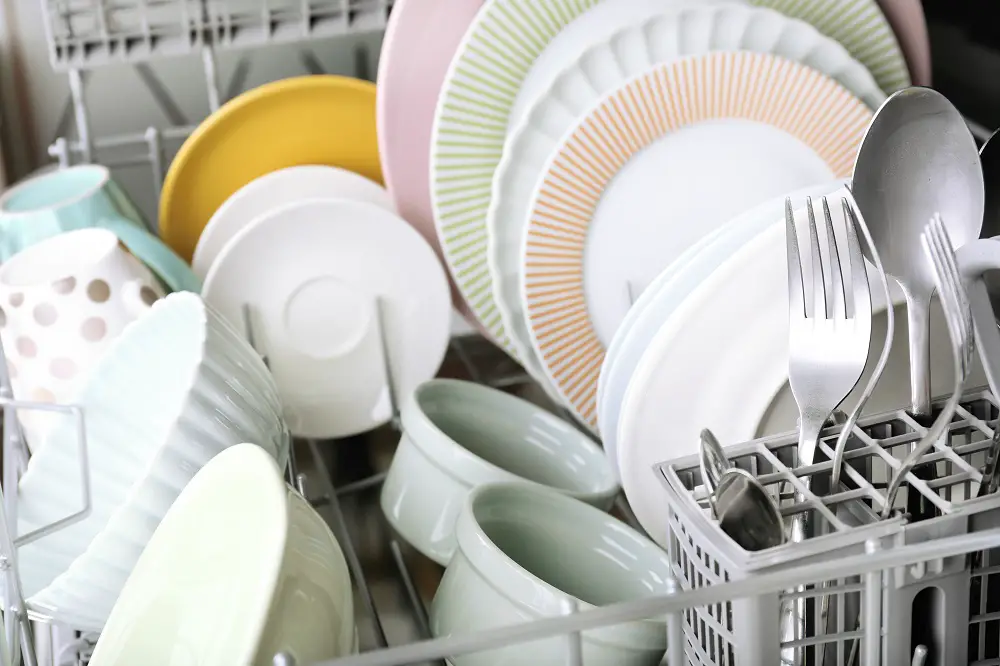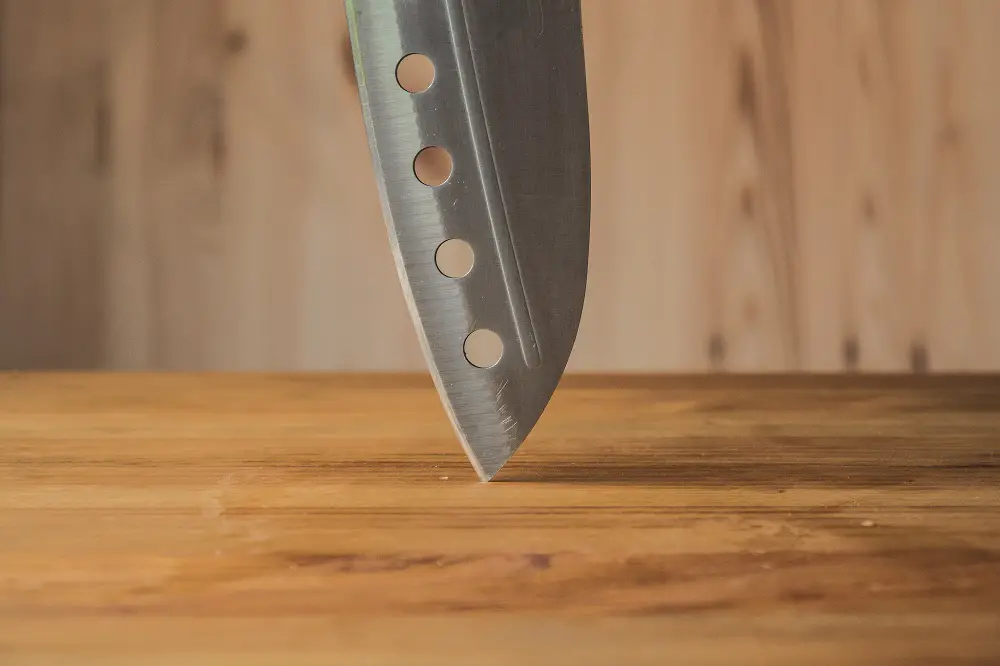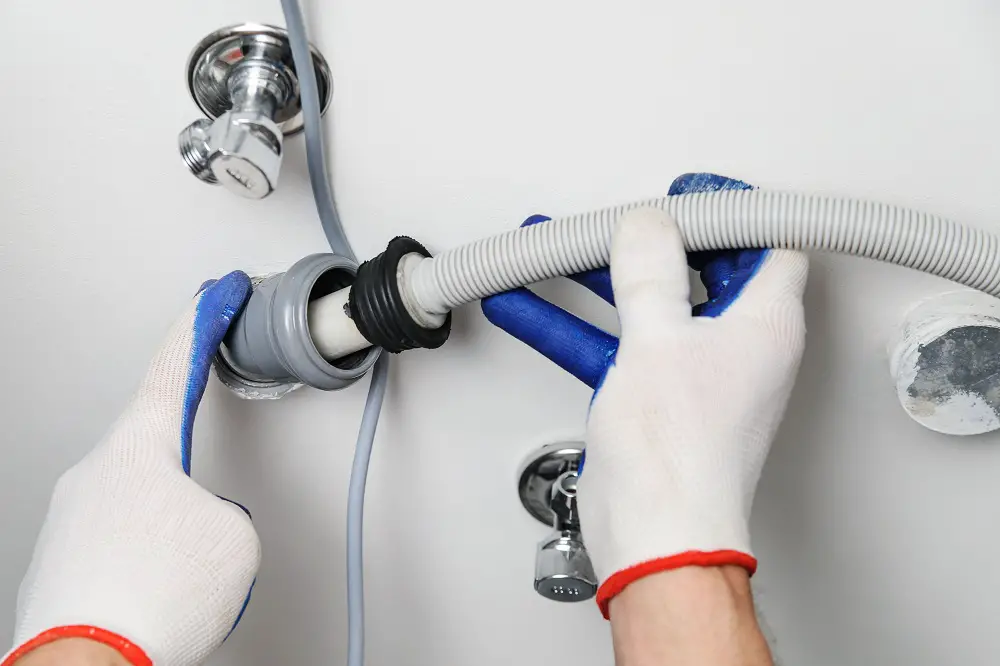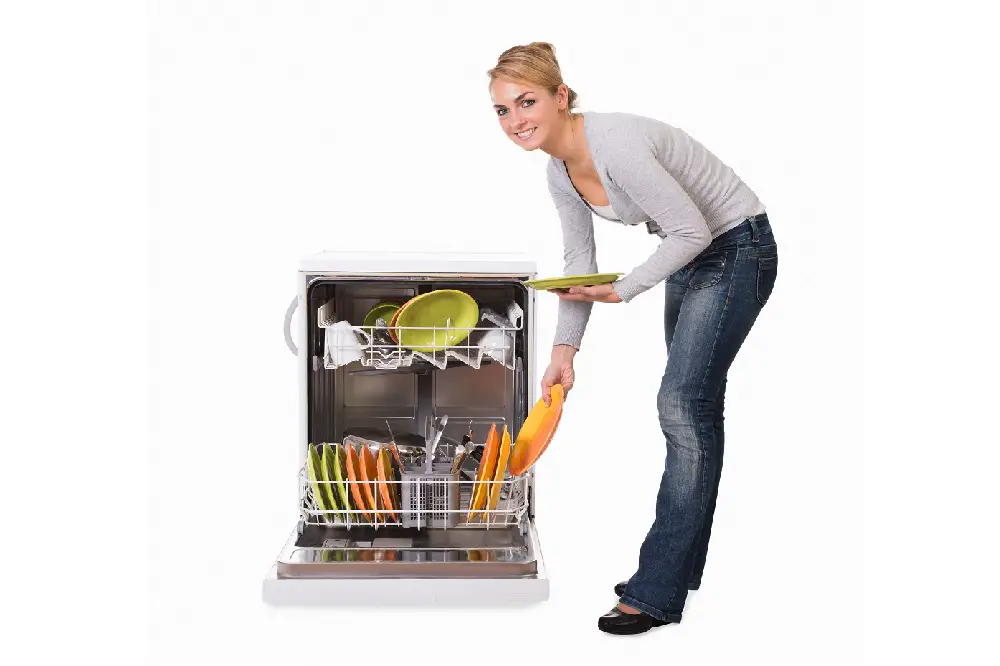Portable dishwashers, just like built-in models, require sufficient water pressure to fill the machine during the starting cycle. Then, the internal pump sprays the water at high pressure during the wash cycle.
While the water pressure to operate portable dishwashers vary based on the capacity and model, most only require between 5-20 PSI (Pounds per Square Inch) water pressure for proper functioning.
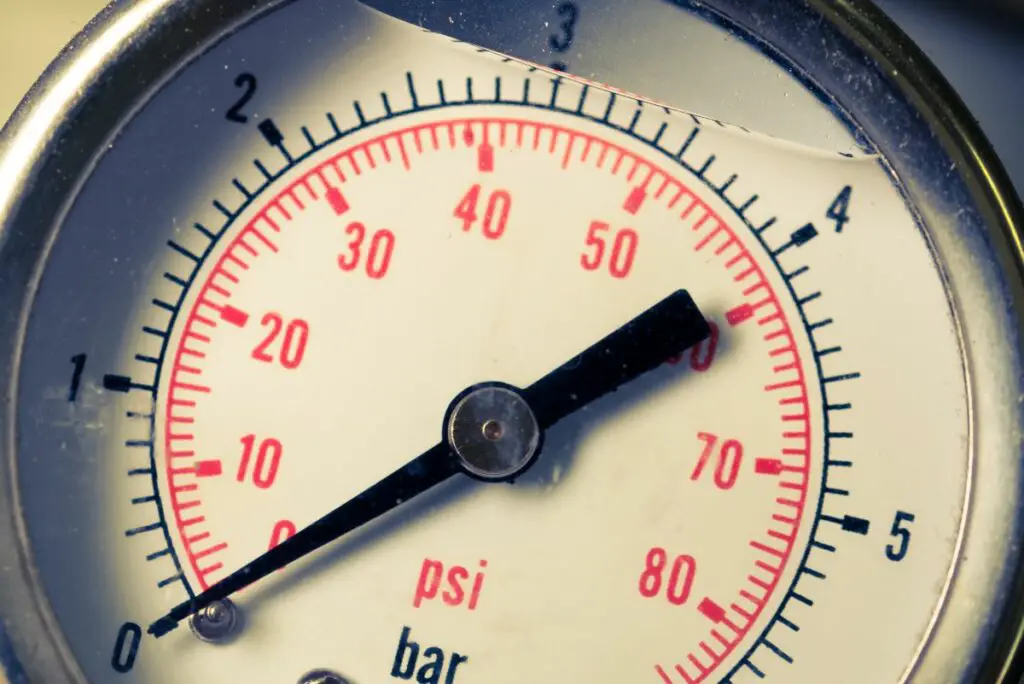
Read on to learn more about portable dishwashers’ minimum and maximum water pressures, how to check the water pressure, and the reasons and fixes for low water pressure.
Table of Contents
Low Water Pressure for Portable Dishwashers
A portable dishwasher needs to operate within the water pressure limits recommended by the manufacturer. This ensures the machine can effectively wash dishes after its drum fills with the required water (a water inlet valve and timer control the filling cycle).
Water pressure impacts a dishwasher’s performance. When the water pressure in your portable dishwasher is lower than recommended,
- The water flows slowly and doesn’t fill up the machine (if regulated by time)
- The appliance might not be able to wash your dishes effectively, leaving the dishes dirty at the end of a wash cycle
- Those appliances with a water level sensor will have increased cycle time as it takes more time to fill the drum with less water pressure
Minimum Water Pressure for Free-Standing Dishwashers
Here are some manufacturer-recommended minimum water pressures for different models of free-standing dishwashers:
| Model | Minimum Water Pressure |
|---|---|
| GE 24” | 20 psi |
| GE 18” | 20 psi |
| Whirpool 24” | 20 psi |
| Black+Decker 18” | 5.8 psi |
| SPT 24” | 20 psi |
Portable free-standing dishwashers require minimum water pressure of 5.8 psi to 20 psi. These values are lower than most from built-in models.
Normal water pressure in a home will be sufficient for all free-standing models.
Minimum Water Pressure for Countertop Dishwashers
Countertop dishwashers often require less water pressure than free-standing dishwashers owing to their size and capacity.
Here are some manufacturer-recommended minimum water pressures for different models of countertops:
| Model | Minimum Water Pressure |
|---|---|
| RCA 24” | 5.8 psi |
| COMFEE | 5.8 psi |
| Novete | 5.8 psi |
| Farberware | 20 psi |
| EdgeStar | 15 psi |
Countertop dishwashers require a water pressure of 5.8 psi to 20 psi, while most models are on the lower end.
This makes countertop dishwashers an excellent choice for situations when the water pressure is considerably low and can’t be increased.
How To Check the Water Pressure?
To ensure an appropriate water supply to the dishwasher, here are the different steps to check the water pressure.
Step 1: Check the Home Water Supply Pressure
To determine sufficient water pressure, open the faucet (regular or hot water) you’ll be using to connect to your portable dishwasher (without its aerator).
Place a 2-quart container under the fully opened faucet and time the filling duration. It should fill in less than 14 seconds (with all other faucets turned off during this test).
This will guarantee a good flow rate and sufficient water pressure.
Step 2: Check the Water Pressure Through the Inlet Hose
Once you’ve established appropriate water pressure from the faucet, connect the dishwasher’s water supply hose (using the suitable adapter). Hold the other end of the hose over a bucket or the sink and open the faucet.
If you see only a small amount of water dribbling out of the hose, it could be a blockage or a damaged hose.
Consider fixing or replacing the inlet hose.
Step 3: Check the Dishwasher Components
If there is strong water pressure from the sink faucet and the inlet hose, the issue could be with the dishwasher’s water inlet valve; sediment buildup causes it to malfunction.
Other issues include a defective valve solenoid (test it using a multimeter) or a malfunctioning float switch (falsely indicating the tank is overfilled) that prevents the inlet valve from opening.
Reasons for a Low Water Pressure
Here are some common reasons for low water pressure in your portable dishwasher:
1) Home Pressure Problems
You’re probably living in a home with low water pressure, possibly caused by one of many reasons. Here are some causes for water pressure issues in your home’s water supply:
Faulty Water Pressure Regulator
If your home has a faulty water pressure regulator (a valve that reduces the home’s incoming water pressure to a safe level), it could cause a sudden decrease in water pressure.
Some reasons a pressure regulator fails include sediment buildup in the valve, causing short cycling, pump problems, and blockages.
Alternatively, the regulator might be set too low to meet the household’s needs.
Peak Periods
When your entire home (and neighborhood) is hooked up to the same water supply, especially with older or overloaded water systems, there will be reduced water pressure during peak usage hours.
A greater-than-average water usage at any particular time in your household or neighborhood will cause water pressure issues to come and go.
Municipal Water Valve Issues
Homes that receive water supply from the local municipality have two valves: one at the water meter outside your home, and the other is the main shut-off valve of the house.
When any of the municipal water supply valves are partially closed, there will be a drop in water pressure.
Clogged Water Filters
Homes with whole-house or single-faucet filtration or treatment systems can experience clogged water filters interfering with the water flow.
However, the water treatment system itself might need replacement or repair.
Clogged or Corroded Plumbing
Your home’s water pipes can get clogged with hard water scaling (limescale and/or other minerals) or corroded, causing low water pressure.
Hard water-caused clogs will restrict the piping diameter over time, causing low water pressure. Corrosion is common in water supply systems with old, galvanized iron pipes that corrode due to the water’s pH level.
Other factors that cause the corrosion of pipes are sediment in the water, high total dissolved solids, sulfate and iron, bacteria, and high levels of dissolved oxygen.
Clogged Water Heater Piping
It could be a water heater issue if you notice reduced water pressure only when you use hot water.
Hard water can cause mineral deposit buildup in pipes, blocking flow into and out of the water heater and reducing water pressure.
2) Faulty Faucet or Fixture
The faucet or fixture you use to connect your portable dishwasher’s inlet hose could be faulty.
It could be because of corrosion, a clog, or issues with connections or seals.
3) Clogged Water Inlet Valve
The water inlet valve controls the hot water coming into a dishwasher and is a part that could cause issues with water pressure when its inlet port gets clogged with debris; it restricts the water flow to the appliance.
You also may be interested in How To Clean a Countertop Dishwasher or How to Clean A Portable Dishwasher Drain.
4) Water Leaks
Any water leak in the home’s water supply lines or a damaged water inlet hose of the portable dishwasher can lower the water pressure.
A water leak can also occur because you’re using the wrong faucet adapter to connect the inlet hose to the sink faucet or due to loose fittings.
We found 19 reasons for a leaking portable dishwasher. Check them out.
5) Kinked or Restricted Water Line
If the appliance’s inlet hose is kinked, the water pressure will appear lower than usual. Similarly, if it’s clogged with mineral deposits or sediments, there will be a reduction in water pressure in the dishwasher.
How To Fix a Low Water Pressure?
If your portable dishwasher experiences low water pressure, here are some ways to fix it:
- Consider a residential water treatment solution (a quality water softener) for hard water scaling to avoid mineral buildup (leading to reduced water pressure).
- Install a pump between the water supply mains and your dishwasher.
- Ensure the main shut-off valve (where water enters your home) is fully open.
- Call a local plumbing professional to check (and fix) the water pressure regulator (especially if the water pressure is low during multiple uses simultaneously).
- Check the dishwasher’s water inlet hose for any damage that’s causing leaks. Either fix or replace the damaged hose.
- If a blockage in the pipelines is causing low water pressure, clean them out.
- Locate any other leaks in the home’s water supply system (along the main water line, a pipe leading to a fixture, or the fixture itself), and have them fixed.
- If a faulty dishwasher inlet valve causes low water pressure in your dishwasher, replace it with a new inlet valve.
- Fix or replace a leaky faucet and ensure all the dishwasher fittings are tightly in place.
Maximum Water Pressure for Portable Dishwashers
While a portable dishwasher will not clean dishes properly if the water pressure is lower than the minimum recommended value, some risks are associated when the water pressure exceeds the maximum recommended value.
Some of the issues of operating your portable dishwasher with higher water pressure include the following:
- It can cause pin-hole leaks
- It shortens the life of appliances that use water (including water heaters and dishwashers)
- If you keep your dishwasher connected to an open faucet in between uses, high pressure can cause long-term damage like small leaks (resulting in structural damage and pipe bursts)
- High water pressure could cause the inlet hose connection to get displaced from the faucet if not tightened.
Here are the manufacturer-recommended maximum water pressure values for the portable dishwasher models mentioned above:
| Model | Maximum Water Pressure |
|---|---|
| GE 24”, GE 18”, Whirpool 24”, SPT 24” | 120 psi |
| Black+Decker 18” | 14.5 psi |
| RCA 24”, COMFEE, Novete | 14.5 psi |
| Farberware | 120 psi |
| EdgeStar | 20 psi |
Conclusion
Portable dishwashers have recommended water pressure limits for proper operation. Most free-standing models require water pressure of around 20 PSI, while countertops often require less owing to their smaller sizes.
A lower-than-recommended water pressure will result in the dishwasher not filling up with the required water, and dishes will remain dirty after the wash cycle. On the other hand, higher water pressure might cause damage to the hose, faucet, pipes, or appliance.
If you suspect your dishwasher is experiencing low water pressure, check the pressure from the sink faucet (home’s water supply pressure). Then attach the inlet hose to check for clogs or damaged hose. Finally, check the dishwasher components (inlet valve, valve solenoid, and float switch).
